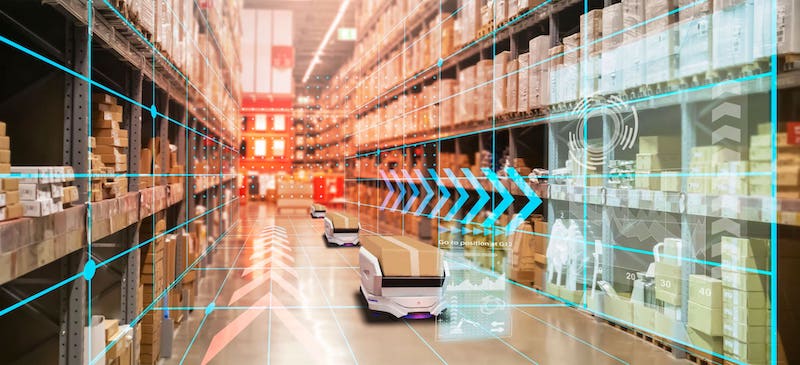Modern technologies, including those used in robotic warehouse automation, have made warehouses more efficient than ever before. When implemented effectively, warehouse automation can reduce costs and help facilities fulfill orders with greater precision and speed, all while minimizing errors.
However, if there isn’t a solid human element involved, these systems can fall short. In addition, some tasks are simply too small in scale or too variable to be worth handling with automated warehouse solutions, in which case the human touch is absolutely vital.
Our customer Mouser Electronics was recently featured in Control Design, providing valuable insight into how warehouse automation can supplement your employees and make them more effective. We’ll discuss some of the technologies and processes involved and how they can improve your operations.
Robotic Warehouse Automation – Technologies Used
There is a wide variety of technologies used in robotic warehouse automation, and we implement many of them when creating systems for our clients. Some of the machines and processes we use include:
High-Speed Conveyors
Conveyor systems are the lifeblood of an automated warehouse. When designed well, high-speed conveyors can move items anywhere in your facility in less time—and with less risk—that it takes to haul items manually.
Scanners
Coupling conveyor systems with barcode scanners is a great way to automate a warehouse. Scanners provide seamless tracking and help systems direct conveyors to create truly self-sufficient transportation and sortation throughout the facility.
Vertical Lift Modules (VLMs)
Vertical lift modules, or VLMs, are essentially automated filing cabinets, only they’re used for small parts and supplies. VLMs can rapidly retrieve and deliver items to employees’ workstations, reducing walking time and improving productivity.
Picking and Storage Machines
Machines can also facilitate picking and storage. The OPEX Perfect Pick, for instance, uses robotic technology to pick items up to 80 pounds from aisles and deliver them to designated workstations, increasing inventory distribution rates.
Kardex AutoStore robots are designed for lighter items, making them ideal for micro-fulfillment processes. They also serve to make greater use of available space, giving warehouses more storage space overall.
How Automation Can Improve Warehouse Efficiency
Warehouse automation robotics are an effective way to increase the efficiency of your supply chain and warehouse operations while also improving customer experience. Some of the particular benefits of automation include the following:
More Precise Operations
When properly designed and programmed, warehouse robotics can make your facility operations more precise and less prone to error. Fewer picking and placement errors occur, sortation is more reliable, and less time is wasted correcting mistakes. This also improves customer experience, resulting in fewer returns and complaints.
More Efficient Employees
Warehouse automation is often best used to improve the efficiency of your employees, whether that’s by reducing walking time, improving safety, or making picking, order fulfillment, etc. easier. In essence, you’re helping your people do their jobs, not replacing their jobs altogether.
Quicker Fulfillment
Robotic warehouse automation makes order fulfillment quicker and easier, including when it comes to complex individual orders that require a human touch. By making both your automated processes and human-driven tasks more efficient, you’re able to increase throughput and serve more customers.
Combining Automated Warehouse Solutions with Human Elements
A cost-effective way to implement warehouse automation is to target areas of potential improvement. Often, this comes in the form of automating large-scale operations or repetitive tasks, freeing up personnel for work best handled with a human touch. You want to design processes that make your people more efficient and better at their jobs, and that takes a people-oriented approach.
Precision Warehouse Design provides that human touch when designing automated warehouse solutions. Our staff has a combined 225+ years of experience in the industry, and our process allows us to take on complex projects more quickly than our competitors. Each solution is tailored to the client’s needs, and we’ve helped numerous clients, including Mouser Electronics, Amazon, AT&T, and more.
Get in touch to start designing the best warehouse automation solution for your facility.
Warehouse Automation FAQs
What is warehouse robotics technology?
Warehouse robotics use automated systems, machines, and software to move materials or perform essential tasks.
How many warehouses use automation?
Only 20% of warehouses worldwide make use of automation technology. While some facilities don’t need high levels of automation, many others could benefit a great deal from advanced robotics technology.
Why should you automate your warehouse?
Warehouse automation can increase efficiency, reduce errors, improve safety, and streamline processes, making your facility more reliable.




